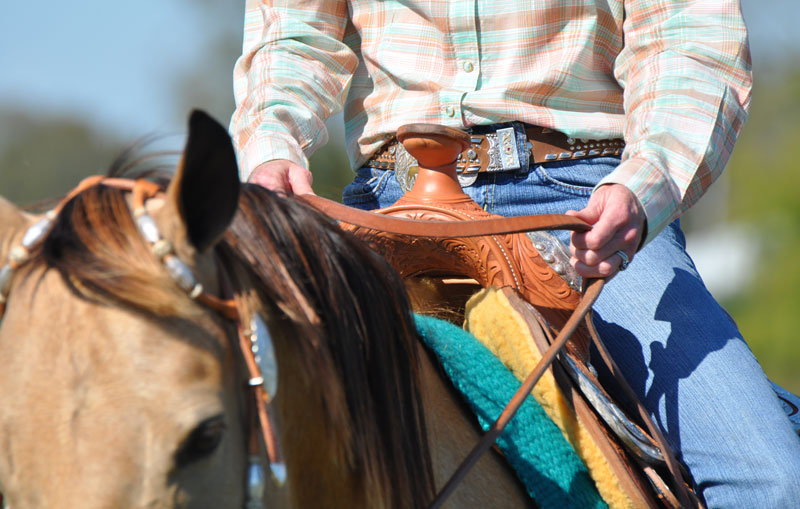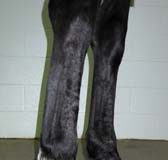
Q: I am finding raw spots on the skin beneath the saddle up by my horse’s withers and am not sure what to do about it. I don’t see any problem with how the saddle sits on his back although he has lost a bit of weight in recent months. What should I do?
The ideal way to avoid saddle sores is to make sure your saddle fits well. Consult a professional saddle fitter to ensure that there aren’t any pressure points and that the saddle doesn’t shift on your horse’s back. The best saddle pads are those that wick away excess moisture from the skin and also don’t trap too much heat beneath the saddle.
Girth sores are best avoided by using materials that slide easily over the skin, such as smooth leather or neoprene; a fleece girth cover may provide a protective alternative. Check that the girth/cinch isn’t bunching up to cause a friction rub and that it hasn’t accumulated abrasive dirt or matted hair. After tightening the girth/cinch, stretch your horse’s front legs forward to release entrapped folds of skin. Figure out the correct tension on the girth/cinch, making it neither too snug nor too loose. Too loose and the saddle shifts side to side; too tight causes pinching and chafing.
The key to treating girth or saddle sores is to rest the inflamed tissue. Foremost of importance is to refrain from riding to give your horse’s tack gall time to heal. During this time, you can identify and modify the inappropriate equipment that caused the lesion. Treat the gall as with any wound – clean it well and if the injury is fresh, cold therapy (ice packs) helps to reduce inflammation. A water-soluble ointment, vitamin E or aloe cream keeps the sore soft and pliable and protected. Application of diaper rash products, like Desitin, can dry up a weeping wound for the initial treatment. Insect repellants around the area protect the gall from fly irritation.
Your goal is to have the skin heal up as good as new to prevent recurrence. It usually takes 2-3 weeks to heal a skin wound, although deeper wounds may take longer. Patience in staying out of the saddle is important so you don’t stress the tissue prematurely before it has had a chance to heal.
Nancy S. Loving, DVM, is a performance horse veterinarian based in Boulder, Colo., and is the author of All Horse Systems Go.
This article originally appeared in the October 2015 issue of Horse Illustrated magazine. Click here to subscribe!







Good and well timed advise. My friend’s mare, has a sore on the girth area.
great info
I remeber my Grandpa talking about gall sores from the harness not fitting good, that would be about the same thing, only cause by a harness not saddle or girth.